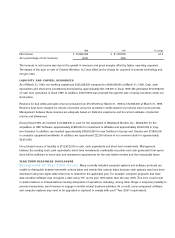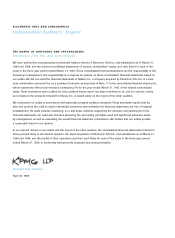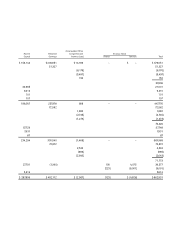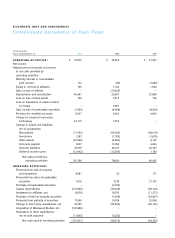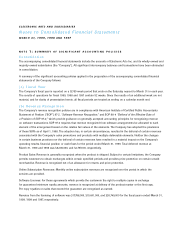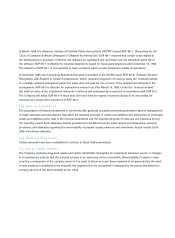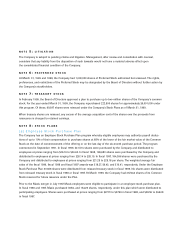Electronic Arts 1999 Annual Report Download - page 28
Download and view the complete annual report
Please find page 28 of the 1999 Electronic Arts annual report below. You can navigate through the pages in the report by either clicking on the pages listed below, or by using the keyword search tool below to find specific information within the annual report.
ELECTRONIC ARTS AND SUBSIDIARIES
Notes to Consolidated Financial Statements
MARCH 31, 1999, 1998 AND 1997
NOTE 1: SUMMARY OF SIGNIFICANT ACCOUNTING POLICIES
Consolidation
The accompanying consolidated financial statements include the accounts of Electronic Arts Inc. and its wholly-owned and
majority-owned subsidiaries (the “Company”). All significant intercompany balances and transactions have been eliminated
in consolidation.
A summary of the significant accounting policies applied in the preparation of the accompanying consolidated financial
statements of the Company follows:
(a) Fiscal Year
The Company’s fiscal year is reported on a 52/53-week period that ends on the Saturday nearest to March 31 in each year.
The results of operations for fiscal 1999, 1998 and 1997 contain 52 weeks. Since the results of an additional week are not
material, and for clarity of presentation herein, all fiscal periods are treated as ending on a calendar month end.
(b) Revenue Recognition
The Company’s revenue recognition policies are in compliance with American Institute of Certified Public Accountants
Statement of Position (“SOP”) 97-2, “Software Revenue Recognition,” and SOP 98-4 “Deferral of the Effective Date of
a Provision of SOP 97-2,” which provide guidance on generally accepted accounting principles for recognizing revenue
on software transactions. SOP 97-2 requires that revenue recognized from software arrangements be allocated to each
element of the arrangement based on the relative fair values of the elements. The Company has adopted the provisions
of these SOPs as of April 1, 1998. The adoption has, in certain circumstances, resulted in the deferral of certain revenues
associated with the Company’s sales promotions and products with multiple deliverable elements. Neither the changes
in certain business practices nor the deferral of certain revenues have resulted in a material impact on the Company’s
operating results, financial position or cash flows for the period ended March 31, 1999. Total deferred revenue at
March 31, 1999 and 1998 was $8,206,000, and $2,797,000, respectively.
Product Sales: Revenue is generally recognized when the product is shipped. Subject to certain limitations, the Company
permits customers to obtain exchanges within certain specified periods and provides price protection on certain unsold
merchandise. Revenue is recognized net of an allowance for returns and price protection.
Online Subscription Revenues: Monthly online subscription revenues are recognized over the period in which the
services are provided.
Software Licenses: For those agreements which provide the customers the right to multiple copies in exchange
for guaranteed minimum royalty amounts, revenue is recognized at delivery of the product master or the first copy.
Per copy royalties on sales that exceed the guarantee are recognized as earned.
Revenue from the licensing of software was $17,788,000, $15,431,000, and $26,749,000 for the fiscal years ended March 31,
1999, 1998 and 1997, respectively.


